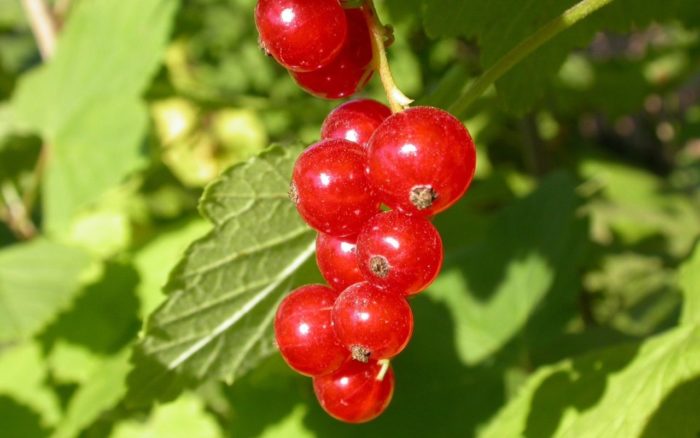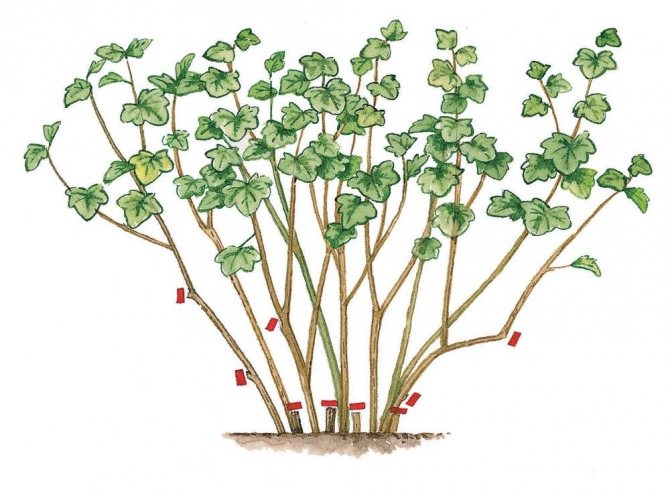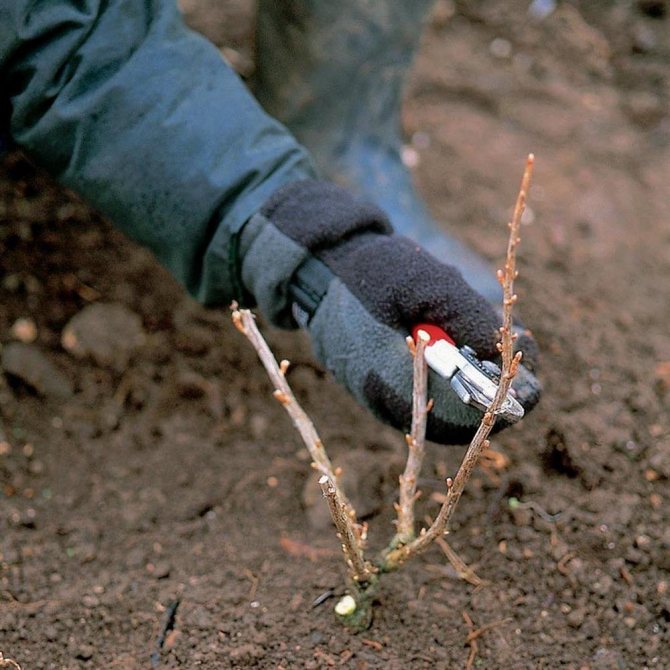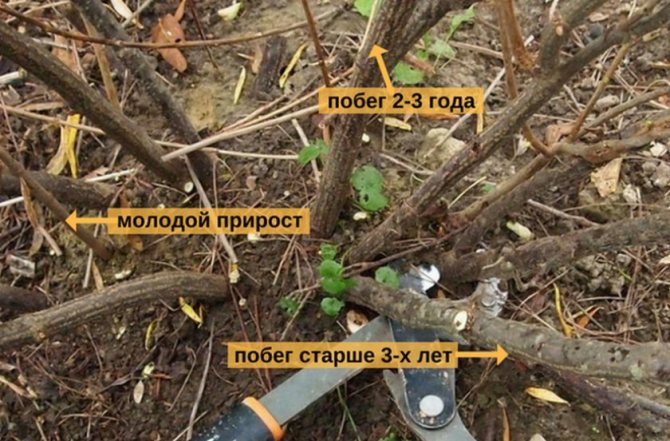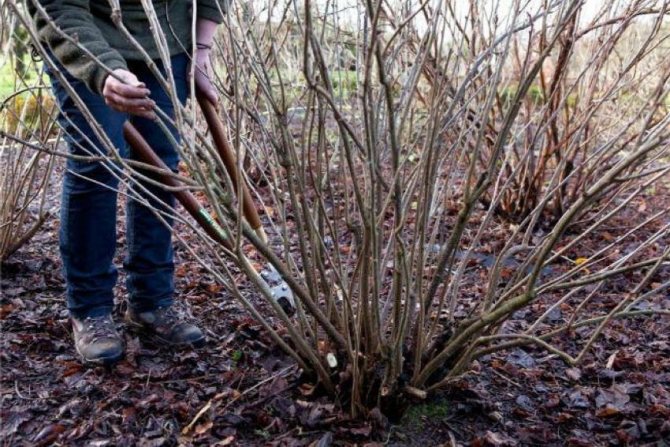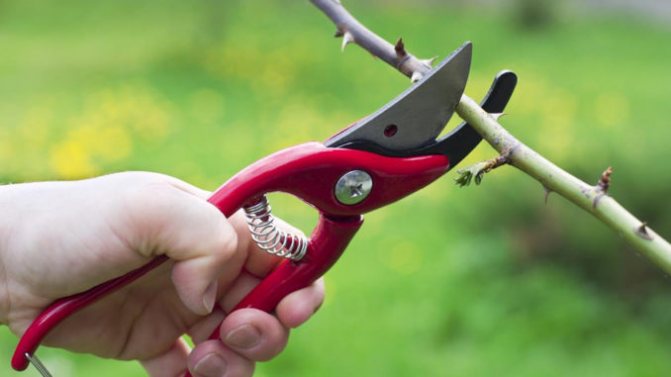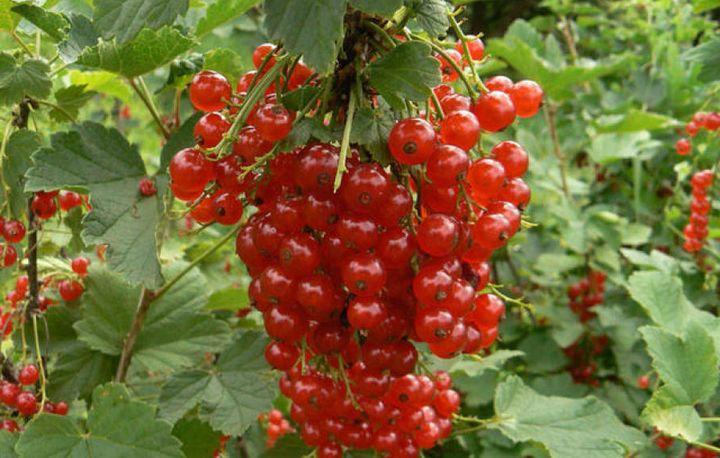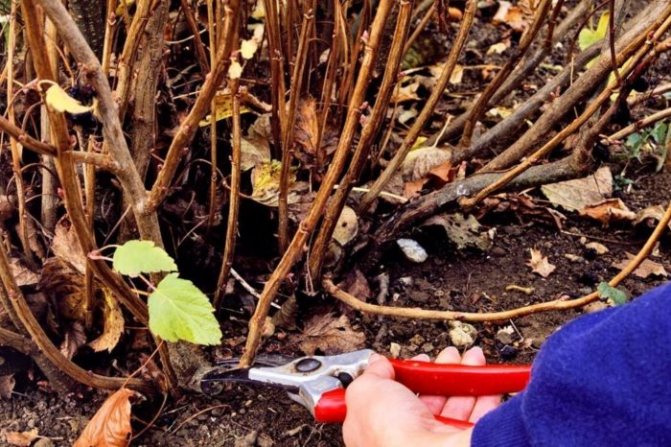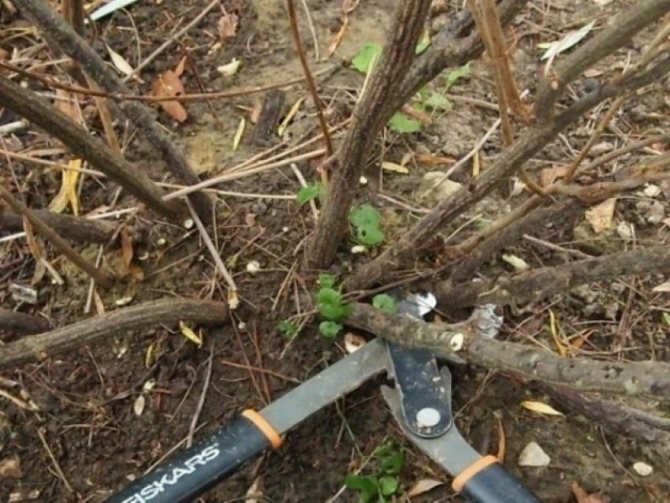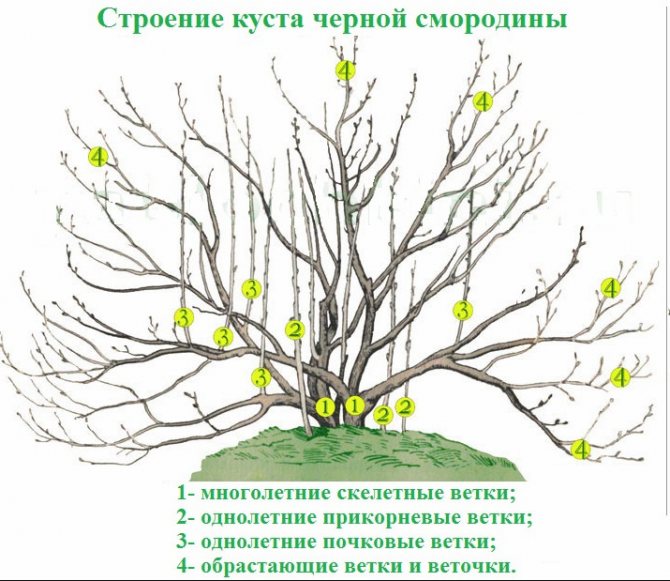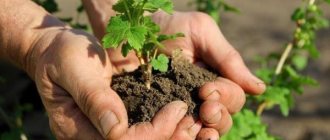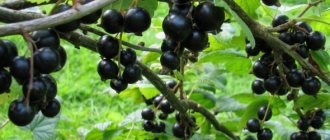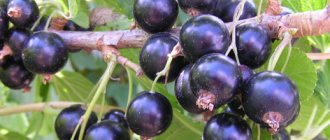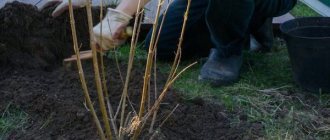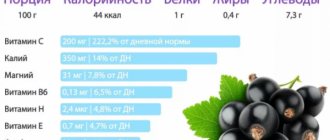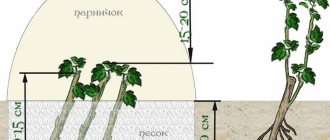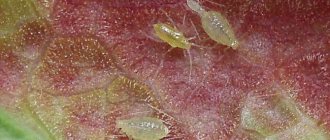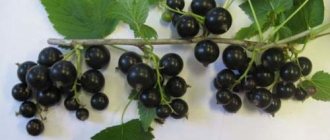Many people like to grow a garden culture on their site - black currant. But over time, the bush can age, as a result of which its fertility decreases. The berries become small, lose quality, and yield decreases. There is no need to rush to uproot the plantings in order to plant new ones. These are expenses, the loss of unique varieties. It also takes time until young plants reach active fruiting. Therefore, the methods of culture renewal are used. Consider how to rejuvenate black currants in the spring.
The goal of rejuvenation
Any gardener who has currants on his garden plot sooner or later faces the need to rejuvenate old bushes. The obligation of the event is due to the properties of the shrub to give fewer berries with age, the quality of which also decreases.
Such work is required to be carried out not only for aged specimens, but also noticeably affected by the vital activity of harmful insects and diseases. It will not be superfluous to correct currants with a strongly thickened crown or injured root system. The problem in this case is the excessive number of shoots preventing light from entering the green mass. As a result, some of the fruits are small in size and do not have time to ripen in time.
Timely pruning allows you to return the productivity of the shrub to its previous level and increase its immunity to various ailments.
Suitable dates
Opinions differ among gardeners about when it is preferable to prune a plant. However, there is no special criterion regarding this aspect. In favor of the autumn procedure, they attribute the opportunity to contemplate the fruits of their labors as early as the next season.
Activities should be carried out only when the juice ceases to circulate along the branches, which indicates its unpreparedness for the upcoming work. Otherwise, the currants will not have time to prepare for the onset of cold weather and, as a probability, will die.
Shrubs are cut when they reach the age of 5. Rejuvenation of an older one can take several seasons.
The benefits of pruning in the fall include:
- the duration of the time interval that is permissible for the procedure exceeding in comparison with the spring;
- the ability to well prepare the culture for the upcoming frost;
- activation of the growth of new shoots;
- stimulation of fruiting in the next season.
In favor of the spring haircut, it can be attributed to its combination with sanitary correction and the fact that during this period the risk of contracting diseases is much less. Among the minuses, the appearance of berries is distinguished only after a year.
Work should be carried out exclusively in dry weather in order to protect the plant from pathogenic spores spreading in the precipitation.
Features of the procedure
One of the goals of pruning in the fall is the appearance of new shoots that protrude from the ground and are called zero.
To achieve the result, several aged but viable branches are cut out and systematically removed into skeletal thin vertical segments. For maximum and uniform fruiting, it is required to leave 3 zero shoots.
Pruning rules
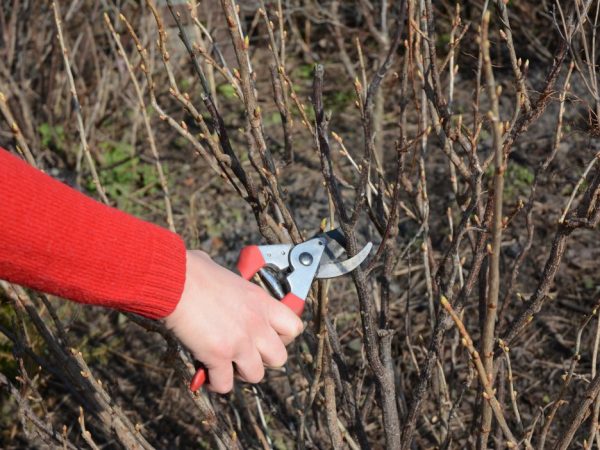
All slices need to be processed
- A shoot on which a weak growth is observed is shortened so that no more than 5 buds remain on it.
- When determining the cut, preference is given to a place located several centimeters above the kidney.
- It is not recommended to leave large-sized hemp due to the fact that pests can hide in them in the future.
- For uniformity of the crop, branches of different age categories are kept on the plant.
- They regulate the growth of new shoots - almost the same number should appear every year.
- Cut strictly at an angle of 45-50 degrees.
- The number of segments left depends on the development of the culture. On powerful ones, it is allowed to save up to 10-14, on weaker ones - about 5.
- The cut must be disinfected. For this, special purchased preparations, garden pitch or ash can be used.
During the correction, remove:
- damaged and weakened shoots;
- branches directed deep into the crown, as well as creeping along the surface of the soil;
- non-yielding segments.
Recommendations
If it is not possible to determine the age of the processes, it is allowed to carry out a haircut according to a simplified scheme. For this, the bush is annually shortened by ¼ of the total volume of the aboveground part. This approach greatly simplifies agrotechnical work for novice gardeners.
To rejuvenate old specimens, you cannot do without radical pruning, which consists in cutting off all branches at the root. When carrying out the procedure in the fall, the soil surface is mulched with dry straw or wood chips.
As a result, the growth of young shoots from root buds is activated.
If the goal has not been achieved, you should not repeat the procedure. This is due to an imbalance between the crown and the root system.
To preserve the culture, it is allowed to resort to vegetative propagation.
- In May / April, in the lower part of the mother bush, one-year-old shoots are chosen, which they bend down and drop in with earth, not forgetting to moisturize abundantly throughout the summer.
- In the spring, young shoots are transplanted to a new place.
Michurin method
This correction method allows you to rejuvenate a large amount of currants. Its principle is as follows:
- During the first 5 years of the culture's life, exclusively sanitary and formative pruning is carried out, and only ½ of the bushes are cut for 6 years. They are additionally fed.
- In the coming season, young plants are sorted out, choosing the strongest and most viable, the rest are uprooted. New cuttings are transported to the vacant space.
- Duplicate the actions with the second part of the adult bushes.
How to rejuvenate an old shrub
Instrument preparation
For pruning red and black currants will need:
Requirements for these tools are standard:
- the blades must be well sharpened (it is easy to work and the bush is less injured);
- the cutting edge must be disinfected with at least a solution of potassium permanganate (especially when moving to another bush).
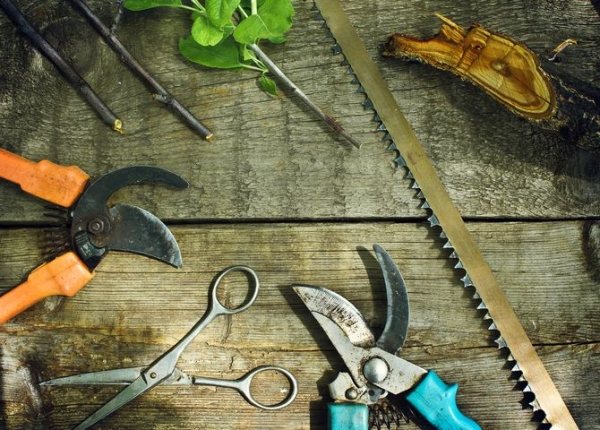

To trim the currants, you will need a pruner, a garden knife and a small hacksaw. blades must be sharpened and sanitized
Step by step recommendations
First, you need to decide how much the situation is running: you need a simple regular autumn pruning with rejuvenation, or you need to carry out a radical rejuvenation of the bush.
Be sure to cut out:
- broken branches, directed into the bush or into the shade, lying on the ground;
- lean (they must be noted in advance);
- weak growth of the current year.
To provoke their regrowth, it is necessary to remove 2-3 quite viable, but old branches.
The growing "zero" branches will be stronger if regularly remove tops on the lower parts of the abandoned branches... Of these "zeroes", three (the strongest) are left for fruiting.
Rejuvenation scheme
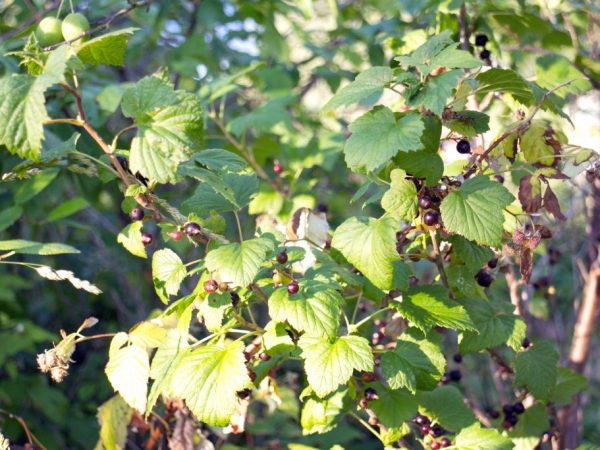

The scheme depends on the age of the plant
When rejuvenating each type of currant, it is required to take into account the characteristics of the variety.
Black is characterized by:
- accelerated aging process;
- fruit formation on 2-3-year-old shoots;
- the formation of berries on the central buds.
Correction should be carried out in the 5th year of the life of the bush, cutting down completely the shoots that have reached this age. Younger segments, vegetating for 3 years, are shortened by ¼ of the entire length, yearlings - by ⅓.
Red currants take longer to ripen, so you need to cut branches with a minimum age of 8 years. Comparatively young ones are excised so that 10-12 increments are preserved on them.
Also, when updating a culture, it should be borne in mind that it forms fruits, unlike black, at the ends of the shoots, and not in the center.
Why rejuvenate black currant
Even if proper care is taken for the shrub, after five years you will have to do its planned rejuvenation. The currant quickly begins to produce a crop, but the bush also becomes obsolete soon. Usually, the need to update arises if you have to take old plants from the previous owner of the cottage. Or own plantings for many years. They should be improved, as the drop in yield is making itself felt.
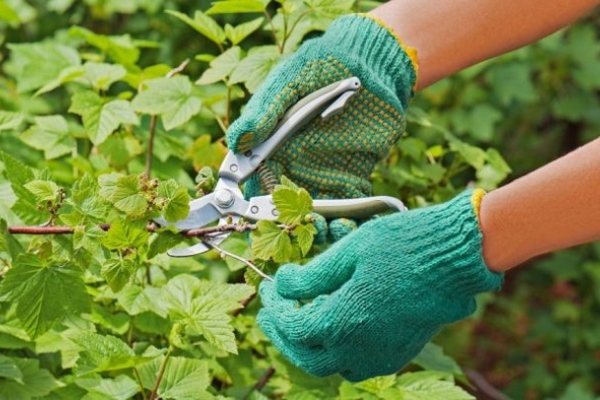

How to rejuvenate black currants in spring
How to refine currant bushes and when it is better to do it are questions that arise under similar circumstances. Pruning or shaping the bush is carried out in the first year of life after planting. There is a rule that the main crop is produced by 2 or 3 year old branches. Therefore, you need to remove by cropping:
- branches over 3 years old, since thickening does not increase the fruitfulness of the bush;
- weak branches of the zero order, tops.
With proper care, the bush bears abundant fruit for no more than 7 years. After this period, the taste of the berries becomes worse, they become smaller, and their number also decreases. You can specify the following cases when the rejuvenation of the currant bush is required:
- The presence of pests or diseases;
- Extensive overgrowth;
- Numerous old branches, overgrown bush;
- The plant is deliberately malformed;
- The currant has been growing for over 6 years, there is a decrease in yield;
- Root damage.
Rejuvenation and pruning associated with it are appropriate if the variety is rare and the owner does not want to part with it.
Important! After the procedure, resistance to diseases and fungi increases, care is simplified, which is typical of any garden shrubs and trees. After improving ventilation inside the plant, the former ability to bear fruit returns. The shrub can rejuvenate and redecorate the garden.
Follow-up care of the bush
A rejuvenating cut of fruit bushes should be done so that they have time to prepare and move away from stress for the onset of cold weather.
You can help them in this by carrying out a number of agrotechnical measures.
- Loosening of the soil surface in the near-wellbore space.
- Top dressing with mineral and organic fertilizers, as them it is optimal to use double superphosphate, rotted manure and potassium chloride.
- Mulching the substrate with sawdust. The recommended layer thickness is 10 cm.
- Preventive treatment against diseases of fungal origin with colloidal sulfur and against pests - karbofos.
Frequent mistakes
The most common mistake, from which no novice agronomist is immune, is determining the age of the shoots. In this matter, it is necessary to be based on the color of the wood of the branch: over time, it acquires a darker color.
- The annual growth is characterized by a smooth, pale gray skin that gradually coarsens every year.
- Very old specimens may have minor cracks on the surface.
Also, some are trying to increase the yield of the shrub by applying a large amount of fertilizer.However, trimming is indispensable in this case.
You should not demand immediate results from the plant and rejuvenate it in one step. In order not to particularly injure the currants, the process is stretched over several seasons. The exception is fairly healthy specimens with powerful zero shoots. Ideally, the update begins with a formative correction and the elimination of frozen and infected branches.
If, during pruning, shoots with a black core or completely hollow were found, then the glass parasite parasitizes the plant, causing considerable damage to the plantings. In this case, it is necessary to dispose of all damaged segments, namely to burn them.
When to prune - fall or spring?
Late autumn pruning is preferred. (after the leaves have fallen off) or in early spring before the buds swell, practically in the snow. It turns out that black currants will have to rejuvenate in late autumn.
Do not wait for the leaves to fall off completely. It is enough if at least half of them turn yellow. They can remain on the branches until severe frost strikes.
If pruning fails in the fall, they are pruned in the spring. Moreover, spring pruning has an advantage - the affected shoots are clearly visible. They should be removed first.
When the soil warms up above about 5 degrees, active sap flow will begin and the lesion will spread further. The branches for pruning are chosen as for the autumn, leaving a stump of healthy wood in 2 centimeters.
It is very easy to determine the condition of wood.: dark areas indicate damage and are cut back to healthy light wood.
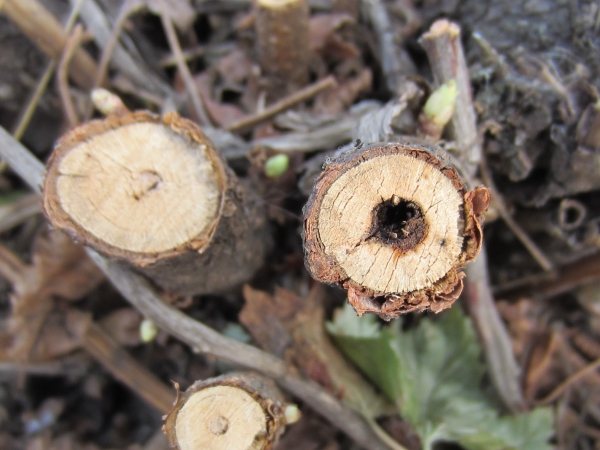

Affected shoots are removed first, leaving a stump of healthy wood 2 cm
After spring pruning, nitrogen fertilizers are applied to the soil.
In the summer it is also necessary to observe for the state of planting currants:
- remove incorrectly growing "zero" shoots;
- get rid of broken branches;
- cut diseased and affected branches in time.

